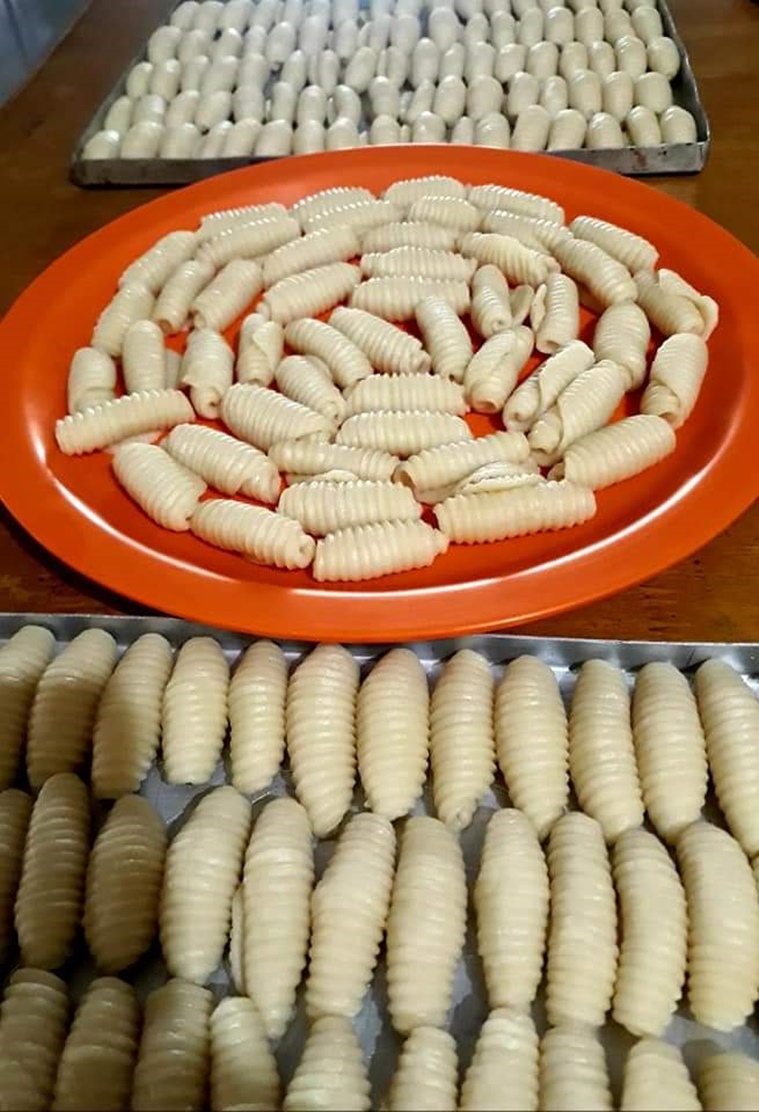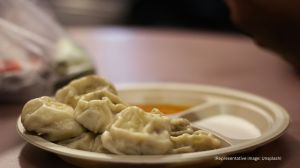All I want for Christmas is Kulkuls
The pillowy soft sweet is a staple in Christmas platters in different parts of the country.
 Made in most Goan, Mangalorean and Anglo Indian homes, kulkuls trace their origin to European fried pastry dough. (Photo: Nina Goes)
Made in most Goan, Mangalorean and Anglo Indian homes, kulkuls trace their origin to European fried pastry dough. (Photo: Nina Goes)Small, fat, caterpillar-shaped, little bits of vanilla-flavoured dough deep-fried till they are crisp on the outside and melting on the inside. That’s how I love my kulkuls. They have been my favourite Christmas sweet ever since I can remember.
All Goan, Mangalorean, Anglo-Indian and East-Indian households have these curly treats as part of their Christmas sweet platter. They are also called kidiyo (meaning “worms” in Konkani), due to their shape. Some accounts trace their origin to European fried pastry dough. Made by entire families together, these are almost always the first to get depleted.
Growing up in Mumbai, kulkul-making day was always set for a weekend, when Mum would have a higher chance of getting us all together. The whole family gathered around the dinner table. The dough would be prepared by mum in advance. As soon as lunch was cleared away, we would all get together and begin. Someone would pinch the dough and roll out tiny marble-shaped balls, while others would work on shaping the kulkuls. The ball of dough would be flattened and then lightly pressed upon the tines of a fork or new combs. These would then be rolled into the caterpillar-shaped forms and the edge would be sealed with the fork or comb.
Tray upon tray would be filled as we chatted, joked and laughed with one another while working. We’d try to claim the prize for the best-shaped ones! Carols would softly play in the background and more often than not, balls of raw dough would be secretly popped into the mouth. My kids do this too, now! The entire process would take a few hours and we’d sometimes break for tea. We knew the end was in sight once mum would get up from the table and begin to heat the oil to fry the kulkuls. Flagging spirits would somehow revive and the last of the dough moulded into shape!
Time for tasting came once the first batch emerged from the frying pan, was drained and cooled sufficiently! And oh, the ecstasy of popping a warm, pillowy soft kulkul into your mouth! It’s the stuff dreams are made of!
Once cooled, the kulkuls would be put into air-tight containers and hidden away, to be served once we got back from midnight mass along with hot coffee or mulled wine. Kulkuls would always take the centrestage in our platter of Christmas sweets or kuswar as we call it in Goa and offered to guests and sent to friends and neighbours.
Kulkul-making is one tradition I’ve nurtured in my children, as well. In a world where Christmas goodies are increasingly getting ordered from caterers and home cooks and the more tedious-to-make sweets are disappearing from the kuswar platter, I insist that we all get together for a day of kulkul making. There are good-natured grumbles and some disappearing acts, but everyone agrees that it is a worthy cause. I still use my mom’s handwritten recipe that I am sharing here:
Kulkul
 These are called ‘kidiyo’ in Konkani, which means worms, because of their curly shape. (Photo: Nina Goes)
These are called ‘kidiyo’ in Konkani, which means worms, because of their curly shape. (Photo: Nina Goes)
Ingredients
l 500 gm flour
l 125 gm margarine (or unsalted butter)
l 2 egg yolks
l ½ a cup of milk (some recipes use coconut milk)
l ½ tsp salt
l ½ cup of castor sugar
l 2 drops of vanilla essence (optional)
Method
Rub the margarine/butter into the flour and mix in the egg yolks. Add the salt, sugar and pour in the milk slowly. Knead till you get a smooth pliable dough. Keep it covered with a wet cloth (to avoid drying it out) pinch a small marble-sized bit and roll between your palms till a smooth ball is formed. Flatten the ball and lightly press against the back of a fork or a kulkul shaper (yes, you get these now!) Roll it gently into a curl and press the edge of the dough with the fork tines or the edge of the kulkul shaper to seal. Heat oil, fry the kulkuls in batches till they are golden brown. Drain on absorbent paper and let them cool before storing. Some kulkuls get frosted, some sprinkled with icing sugar (reduce the sugar in the recipe in such cases) and some even get coloured (simply add food colour to the dough). But whatever shape or form they take, they are delicious and addictive. So, get your family together and whip up a batch. You won’t regret it.
(Bengaluru-based Aiona Misquita Goes is a full-time mom to three teenagers. She loves to cook and keep traditions alive)



- 01
- 02
- 03
- 04
- 05




























